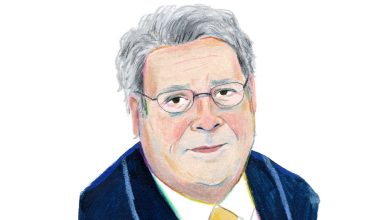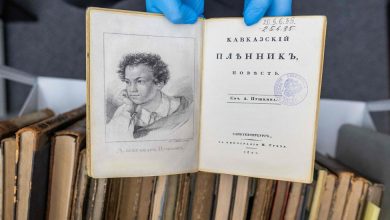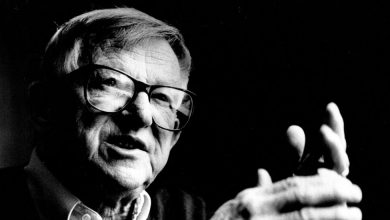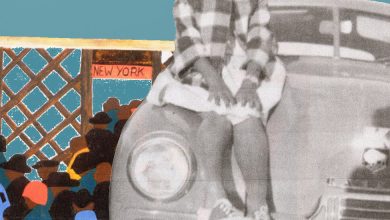Tina Brown Catches Up With Royal Intrigue in ‘The Palace Papers’

THE PALACE PAPERS
Inside the House of Windsor — the Truth and the Turmoil
By Tina Brown
Illustrated. 570 pages. Crown. $35.
In her new book, “The Palace Papers,” Tina Brown takes on a centuries-old institution of strong personalities, byzantine rules, a definite pecking order and mercurial public support.
I don’t mean the monarchy. I mean the press.
Tracing how 21st-century journalism has helped reshape the wobbly contours of the British royal family, Brown is by turns chiding and comradely. She is, after all, the English-born, Oxford-educated former editor of Tatler, Vanity Fair, The New Yorker, Talk and The Daily Beast, as well as a prolific freelance writer, intermittent broadcaster, conference organizer and general gadabout.
The House of Windsor has long been referred to as the Firm. But these days it seems more like a Blob: harder to corral than mercury spilled on an Axminster carpet.
The presumed future queen consort, Camilla, will be anointed with the asterisk of a first marriage, to Andrew Parker-Bowles, that produced two children. One scion, Prince Harry, fled his official duties for the bland American luxury of Montecito, Calif.; his uncle Prince Andrew has been stripped of his military titles following his embroilment in an international sex-trafficking scandal. (With typical brio, Brown refers to Andrew as a “coroneted sleaze machine” and a “ghost royal.”)
Let’s just say the seating charts have gotten very complicated.
Any student of English history knows that zigs and zags in the palatial line of succession are nothing new. Brown was one of a cadre of top newswomen who commented for ABC during the wedding of Prince William to Kate Middleton in 2011. The scale of the ceremonial operation was weighing “heavily on our botoxed brows,” Brown writes. She considered mentioning “the unfortunate fate of previous queens called Catherine: Aragon — divorced; Howard — beheaded,” before deciding this was probably more information than middle-American viewers would want.
The 1997 death in a car crash of Princess Diana, whom Brown memorialized in a best-selling biography, “The Diana Chronicles,” 10 years later, was an indelible blot. The paparazzi chasing the limousine were blamed and demonized after the accident, though Brown forcefully rejects here “the now pervasive narrative that Diana was a vulnerable victim of media manipulation, a mere marionette tossed about by malign forces beyond her control.” Indeed, Brown speculates that Diana, who eschewed protection from Scotland Yard and sometimes tipped off the paps herself to make lovers jealous, may have been almost complicit in her own demise, refusing to wear a seatbelt and perhaps even asking her drunk chauffeur to speed up.
“The Palace Papers” is an apt title for what sometimes seems like a briefcase stuffed to overflowing with such conjecture, plus clippings, transcripts, observations, wry asides, literary references and trivial tidbits. (Speaking of paper, I can’t unsee, somehow, that Charles is said to prefer something called Kleenex Velvet lavatory tissue, unavailable in the States.)
Not that Brown hasn’t scuffed her own shoe leather. She queries the equerries; she tracks down former nannies and ladies-in-waiting. She vividly conjures “the fading walk-up flats in far-flung London postal codes of former courtiers and retainers”: their tables crowded with “tasteful knickknacks,” their stair carpets reeking of “downward mobility and pointless, genteel sacrifice.”
Being Tina Brown, she is more often rubbing shoulder pads with the elite in the course of business: huddling under an umbrella with the historian Simon Schama en route to a 9/11 memorial, for example, or telling the sporty Mr. Parker-Bowles in 1981 that she neither hunted nor fished. (“‘Real intellectual, are you?’ he said with a slight patrician sneer.”)
Proudly, she claims to have been the first, in The Daily Beast, to reveal the extent of Jeffrey Epstein’s “depredations.” She congratulates herself, an energetic shower-upper, for turning down one invitation: to the now-infamous dinner party Epstein held in Manhattan for Andrew, attended by Woody Allen; she asked the publicist if it was a “predator’s ball.”
But as in her earlier royal biography, Brown seems perennially torn between excoriating tabloid reporters for their most egregious trespasses and reveling in their discoveries. With palpably upturned nose, she describes Matt Drudge, who outed Prince Harry’s deployment in Afghanistan even as English outlets conspired to conceal it, as a “U.S. gossip buccaneer,” while Rebekah Brooks, the former editor of the notoriously phone-hacking News of the World, is “one of the great divas” of Fleet Street, a “flamboyant social operator” with “vulpine networking skills” and a “tumbling mane of curly red hair” (signifying what, exactly?).
Brown is perfectly happy to pass on that Prince Philip once slipped a card with his private number to an anonymous socialite on the Caribbean island of Mustique, or that Princess Margaret gave mundane household items like irons and even a toilet brush as gifts to her faithful staff.
In her delicious memoir, “The Vanity Fair Diaries” (2017), Brown also seemed torn between America and England. Here, though, Old Blighty definitely wins (“wins” being a very Tina Brown term). Writing from a pandemic bunker in Santa Monica, she romanticizes rain: “the morose picnics in a squelching car park at Wimbledon; the wet carton of strawberries at Glyndebourne opera house; the sodden scuttle through the church door at Cotswold weddings; the attempt to retain something resembling a hat as the skies open at the Henley Royal Regatta.”(And here’s Schama again, texting memories of chilly Pimm’s parties on the college lawn, with “girls whose faces are turning bluer than their eye shadow.”)
Analyzing the younger generation, the one arguably saving the “whole crumbling theme-park enterprise” of the monarchy, Brown compares Catherine, the Duchess of Cambridge, to an Anthony Trollope heroine (her birth family was “too dogged and upstanding for Dickens,” she supposes, while “George Eliot’s women, by contrast, were too complicated and reflective”). As for Meghan, the Duchess of Sussex and former actress, her story seems to emergefrom “the back of bound copies of Variety” — which, given the state of print publications such as Brown used to oversee, feels like short shrift.
“The Palace Papers” isn’t juicy, exactly, nor pulpy — there’s just not enough new extracted from the whole royal mess. It’s frothy and forthright, a kind of “Keeping Up With the Windsors” with sprinkles of Keats, and like its predecessor will probably float right up the charts.




